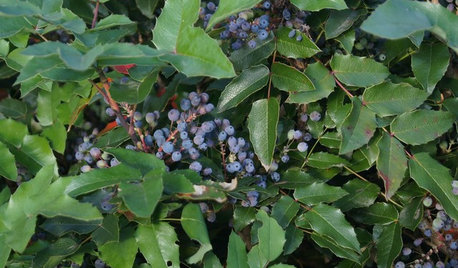Chinese Longbeans -- Arkansas Crop Failures
I am growing 3 varieties of Chinese Longbeans (Vigna unguiculata cultigroup Sesquipedalis) this year... and it HAS BEEN A CHALLENGE! However, I have accidentally impressed two local gardeners who are from Taiwan.... because I got a crop at all!!
I would like to know the following, if anyone has enough experience with this group of beans to fill in the blanks for me.
My 3 varieties are Philippine Purple; Yardlong, Purple Pod; Anna's Taiwan Green (I posted lots of pix of them in the photo galleries as GREAT VEGETABLES)
1) HOW MUCH WATER DO THEY REALLY NEED? I grew 2 varieties (both purple podded types) in a fenced area in my "Back 40" because that was the only place I really had a trellis system heavy enough to support them. I had good soil moisture until end of June, then no rain since, and we had about a month of triple digit temperatures.. nearly all of August. I mulch (meadow grass clippings), and I deep-soak watered all of them at approximately 15 - 20 day intervals. I have had some foliage loss, but Yardlong, Purple Pod still made an abundant crop...
The Philippine is considered day-length sensitive, and it came into bloom unseasonably early, possibly from heat and drought stress. Many of the pods did not fill at all, or had only 2-3 beans at most in them. It also showed the most foliage loss in the 100+ degree heat. Now that the temps are down to 65 nights / 90 days and we are near the fall equinox, it is covered with blooms. However, it was last watered about 2 weeks ago and doesn't seem to be showing drought stress...
Anna's Taiwan Green was sown mid-June, and it was watered regularly. I got an incredible first crop from it (harvested this week), but now it is making very few new blossom stems. I spent another $3 yesterday to deep soak water again... it had been only 10 days since last watering, but lots of root competition in this area...
The lady who gave me the seeds grew hers at their weekend property. She has had excellent crops in past years at that location, but with this year's exceptional heat and drought, she had a crop failure... reported only 2-3 beans per week.
2) WHAT IS THE LOWEST NIGHT / DAY TEMPERATURES THEY WILL TOLERATE AND STILL SET AND MATURE PODS? Johnny's Selected Seeds sells only one variety... says to expect reduced crops in cooler growing areas. Is there a general rule of thumb on how cold the nights have to become to shut off their blooming? What about maturity of pods to save good seeds?
3) WHAT SOIL FERTILITY IS BEST FOR THESE BEANS? I used innoculant on all of mine... and I'm eager to see the roots when I can dig them at end of season. However, I have reason to wonder if very rich soil can actually inhibit their growth.
My basic soil is raw clay with about 50% chunky rocks(limestone - unaltered Ph is 6 - 6.5, but low on all basic nutrients). Some Yardlong, Purple Pod were planted directly in this soil (unimproved, with organic mulches to retain moisture), some went into soil that has had compost added for a couple of years, and one plant shared a root zone with a specialty greens crop, to which I was supplying daily water and high-nitrogen fertilizer.
Philippine Purple is in soil with compost added last 2 years.
Anna's Taiwan Green is growing in raw clay / rock PLUS a chat (limestone) fill abutting it.
All plants in raw clay/rock and moderately fertile soil have come into bloom and cropped well at expected times.
However, the Yardlong, Purple Pod sharing the root zone with the watered and fertilized greens was a full month longer coming into bloom; however, it has produced well since.
Another gardener... also a Taiwan national ... deep composted her garden with cotton gin waste last fall.... and she waters regularly. She had magnificent crops from all her other vegetables, but a total crop failure from Anna's Taiwan Green. Great, healthy vines which did not set a single bloom!
Any additional information on the subjects of water requirements, night temperatures, and soil fertility ranges will be greatly appreciated.





farmerdilla
greentongueOriginal Author
Related Discussions
Best fruit tree to grow in Dallas, Texas
Q
Warm, freeze, warm, freeze, warm, freeze
Q
I Started These Tomato Seeds This Week
Q
Chinese Long Beans - Time / temps to mature seeds
Q
Macmex
greentongueOriginal Author
zeedman Zone 5 Wisconsin
greentongueOriginal Author
greentongueOriginal Author
zeedman Zone 5 Wisconsin
greentongueOriginal Author
Macmex
greentongueOriginal Author
Macmex
luong
greentongueOriginal Author
Macmex
luong